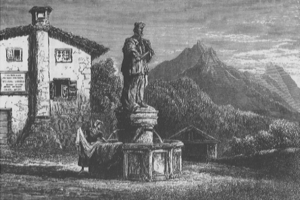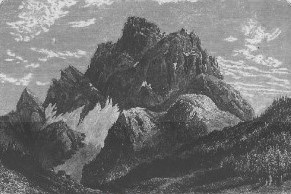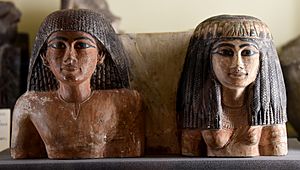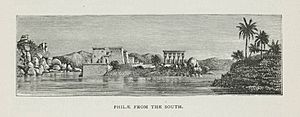Amelia Edwards facts for kids
Quick facts for kids
Amelia Edwards
|
|
|---|---|
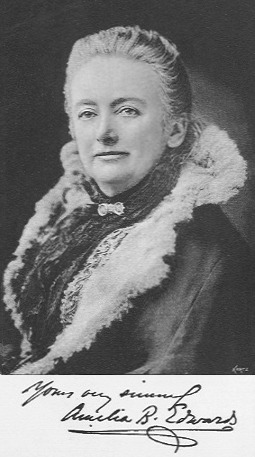
Amelia B. Edwards in 1890
|
|
| Born | 7 June 1831 London, United Kingdom
|
| Died | April 15, 1892 (aged 60) Weston-super-Mare, United Kingdom
|
| Resting place | St Mary's Church, Henbury |
Amelia Ann Blanford Edwards (born 7 June 1831 – died 15 April 1892), also known as Amelia B. Edwards, was an English writer, journalist, and explorer. She was also a very important Egyptologist, someone who studies ancient Egypt.
Amelia Edwards wrote popular ghost stories and novels. Her travel book about Egypt, A Thousand Miles up the Nile (1877), was also very famous. In 1882, she helped start the Egypt Exploration Fund. This group worked to protect ancient Egyptian sites. People often called her the "Godmother of Egyptology" because of her great work.
Contents
Early Life and Talents
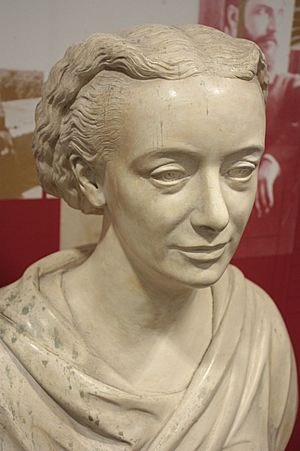
Amelia Edwards was born in London, England, on 7 June 1831. She was taught at home by her mother. Amelia showed a talent for writing from a young age. She wrote her first poem when she was seven. Her first story was published when she was twelve. After that, she wrote many poems, stories, and articles. These appeared in popular magazines like Chambers's Journal.
Amelia was also a talented artist. She drew pictures for some of her own books. She also painted scenes from other books she read. When she was 12, a famous artist named George Cruikshank even offered to teach her. However, her parents did not support her art. They thought being an artist was not a good career.
For some years, Amelia also composed and performed music. But after getting sick in 1849, she had a sore throat often. This made it hard to sing. She then lost interest in music. Amelia also enjoyed other hobbies. These included pistol shooting, horse riding, and mathematics.
Becoming a Writer
In the early 1850s, Amelia Edwards decided to focus on writing. Her first full novel was My Brother's Wife (1855). Her early books were well-liked. But her novel Barbara's History (1864) made her very famous. This book was about a complex family situation.
Amelia put a lot of effort into her books. She spent about two years researching and writing each one. This hard work paid off. Her last novel, Lord Brackenbury (1880), was printed many times.
She also wrote several ghost stories. One of her most famous is "The Phantom Coach" (1864). This story is often included in collections of scary tales. Amelia's own experiences often influenced her writing. For example, Barbara's History used the area of Suffolk as its setting. She had enjoyed summer holidays there as a child.
Personal Connections
In January 1851, Amelia Edwards was briefly engaged to a Mr. Bacon. She ended the engagement in December 1851.
From the early 1860s, Amelia lived with her close friend and companion, Ellen Drew Braysher. Ellen was 27 years older than Amelia. They lived together until both women passed away in 1892.
Amelia also had important friendships with other women. These included the painter Marianne North. Her travel companion, Lucy Renshaw, was also a close friend. Kate Bradbury (later Griffith) was her closest friend in her later years. Kate also helped manage Amelia's affairs after her death.
Exploring the Dolomites
Amelia Edwards first learned about the Dolomites mountains in 1853. She saw sketches of them from Italy. On 27 June 1872, she started a trip through these mountains with her friend Lucy Renshaw. They traveled from Monte Generoso to Venice. This was one way to enter the Dolomites. They hired local mountain guides for their journey.
After a few days in Venice, Amelia and Lucy explored many towns. These included Cortina d'Ampezzo and Caprile. They ended their journey in Bolzano. At that time, many people did not know about the Dolomites. Amelia wrote about this journey in her book A Midsummer Ramble in the Dolomites (1873). It was later called Untrodden Peaks and Infrequent Valleys. During her trip, Amelia also looked for paintings by the famous artist Titian.
After her mountain adventure, Amelia felt that everyday life was "commonplace." In the summer of 1873, she and Lucy Renshaw went on a walking tour in France. But heavy rains cut their trip short. This made them think about traveling to Egypt instead.
Adventures in Egypt
Amelia Edwards, with Lucy Renshaw, visited Egypt in the winter of 1873–1874. She was fascinated by the ancient and modern cultures there. They traveled south from Cairo on a rented dahabeah, which is a type of houseboat. The two women visited Philae and reached Abu Simbel. They stayed there for six weeks. Another traveler with them was the English painter Andrew McCallum. He found a special ancient room that was named after him for a while.
Amelia wrote a very successful book about her Nile journey. It was called A Thousand Miles up the Nile (1877). She also drew the pictures for the book herself. Her travels in Egypt made her realize that ancient monuments were in danger. They were being damaged by tourism and new buildings. She decided to help protect them.
In 1882, she helped start the Egypt Exploration Fund. She worked with Reginald Stuart Poole from the British Museum. This group worked to research and preserve ancient Egyptian sites. Amelia became a leader of the Fund until she died.
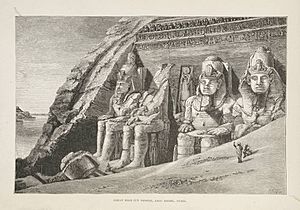
To help the Fund, Amelia stopped most of her other writing. She focused on Egyptology. She wrote for the Encyclopædia Britannica and other important books. Amelia also gave many lectures in the United States in 1889–1890. These talks were later published as a book called Pharaohs, Fellahs and Explorers.
Later Life and Legacy
Amelia Edwards passed away on 15 April 1892, after getting influenza. She was buried in the churchyard of St Mary the Virgin, Henbury, near Bristol. Her grave has a tall stone monument called an obelisk. Her close friend Ellen Drew Braysher is also buried there.
Amelia left her collection of Egyptian artifacts and her library to University College London. She also left money to create a special teaching position. This was the Edwards Chair of Egyptology. This gift greatly helped the study of Egyptology. Her dedication earned her the nickname "the Godmother of Egyptology." She also left many books and artworks to Somerville College, Oxford.
Biographies
- Deborah Manley, (2015) Oxford Dictionary of National Biography entry.
Images for kids
See also
 In Spanish: Amelia Edwards para niños
In Spanish: Amelia Edwards para niños


